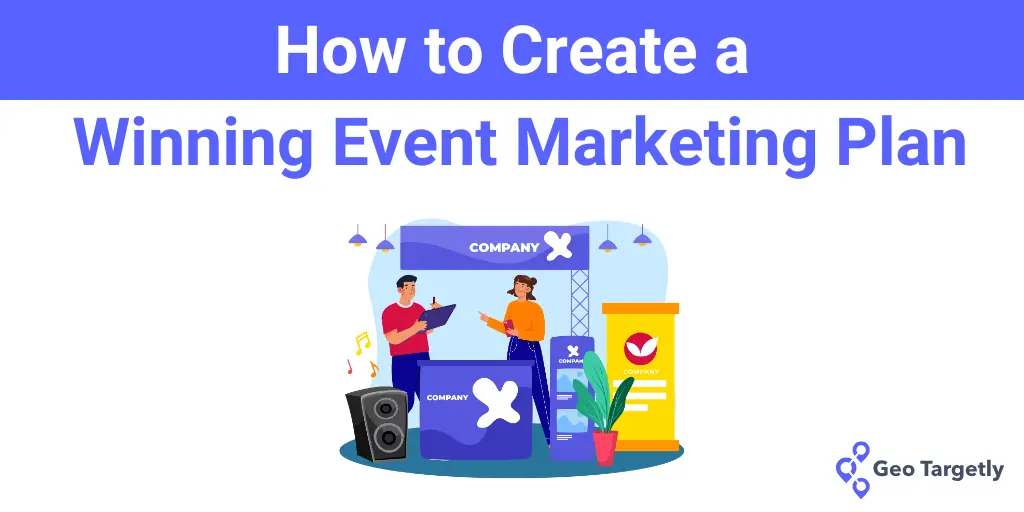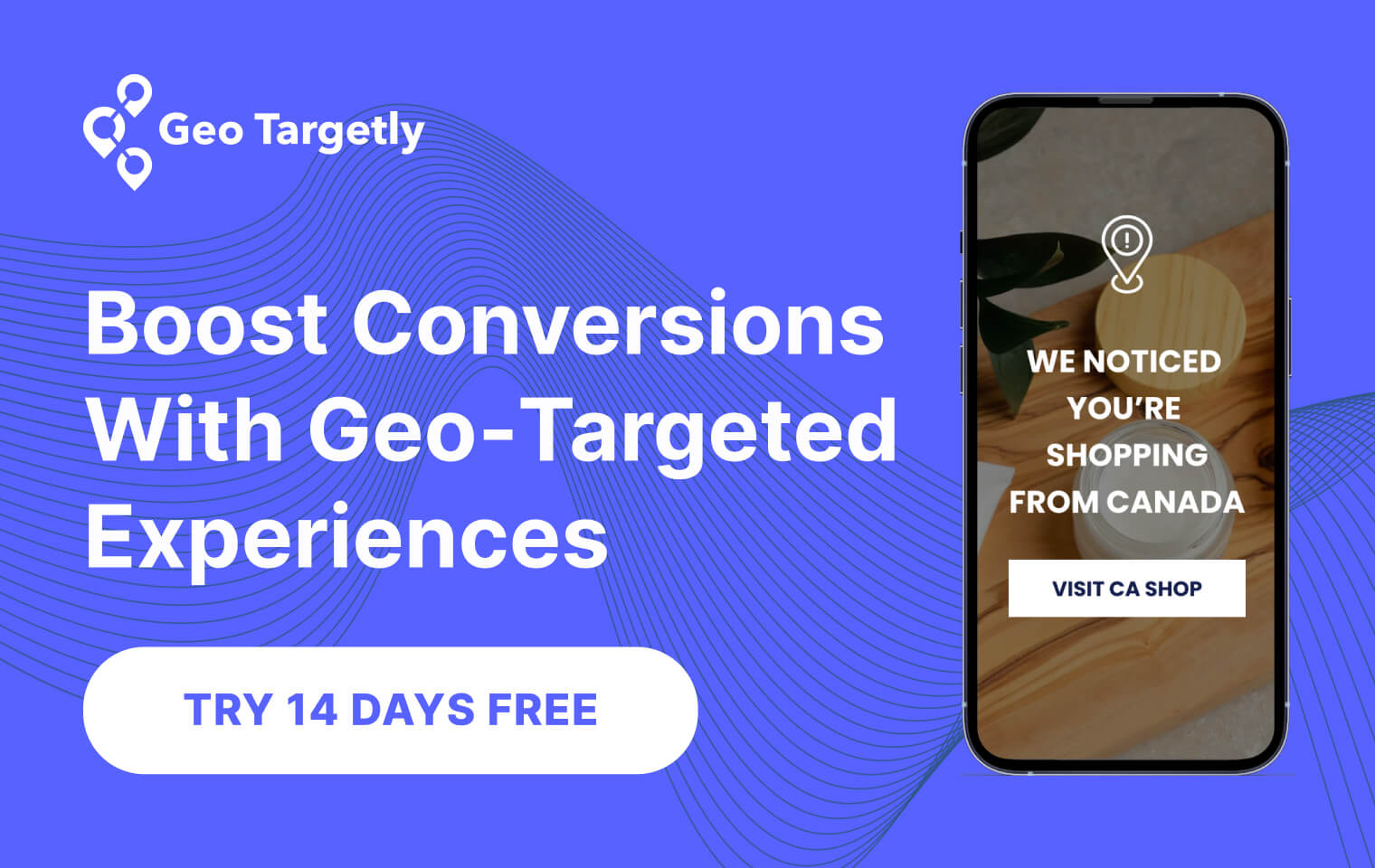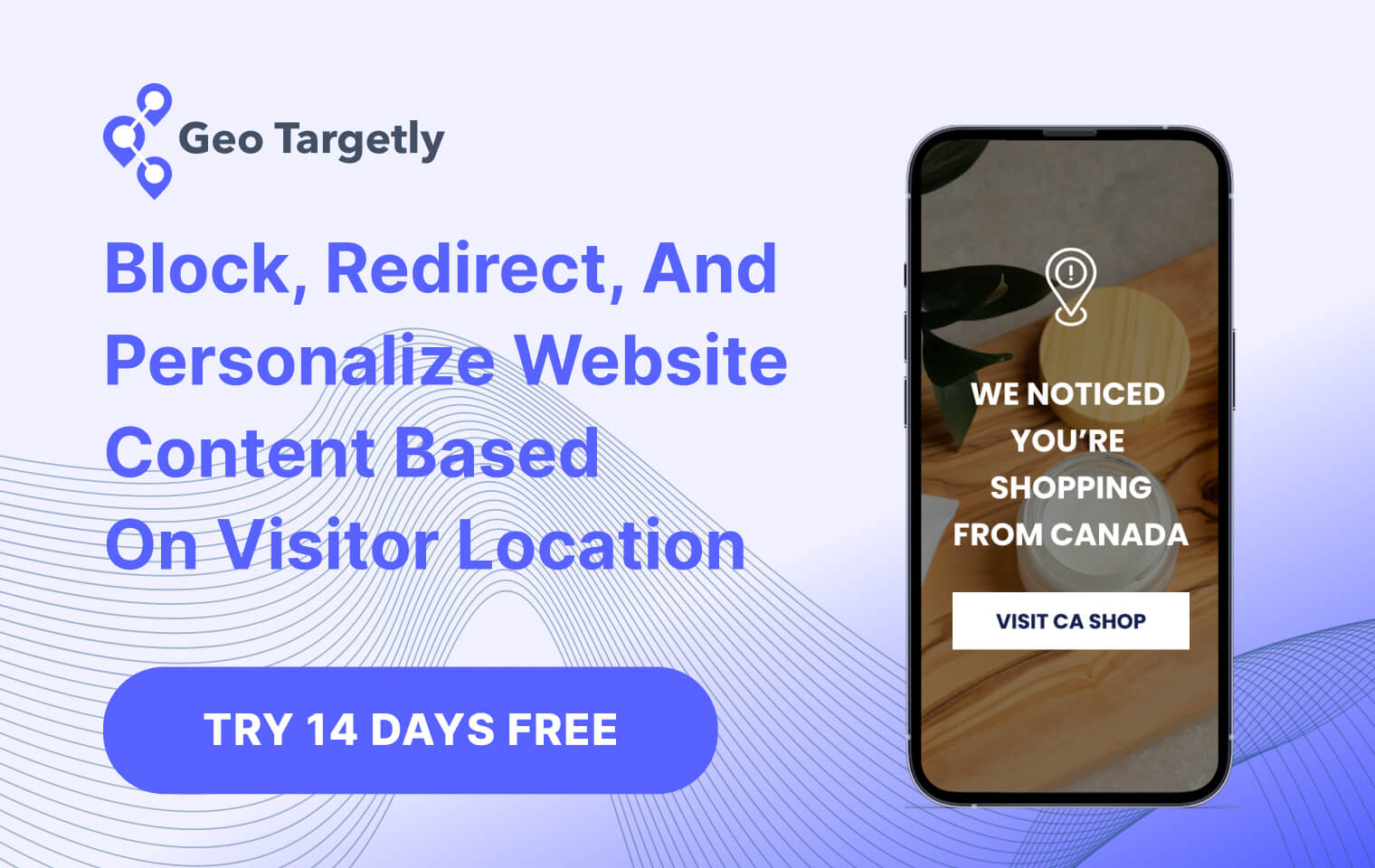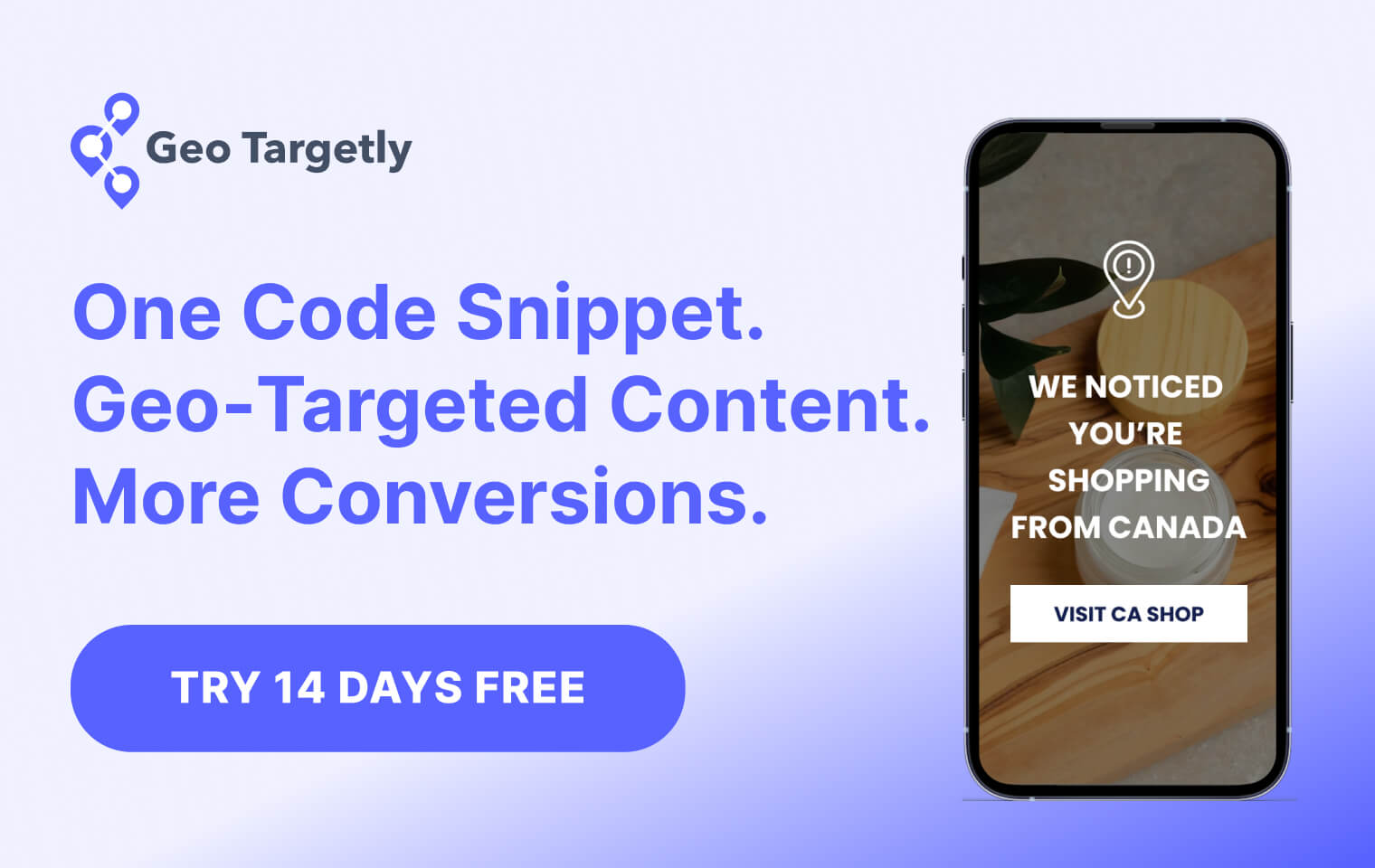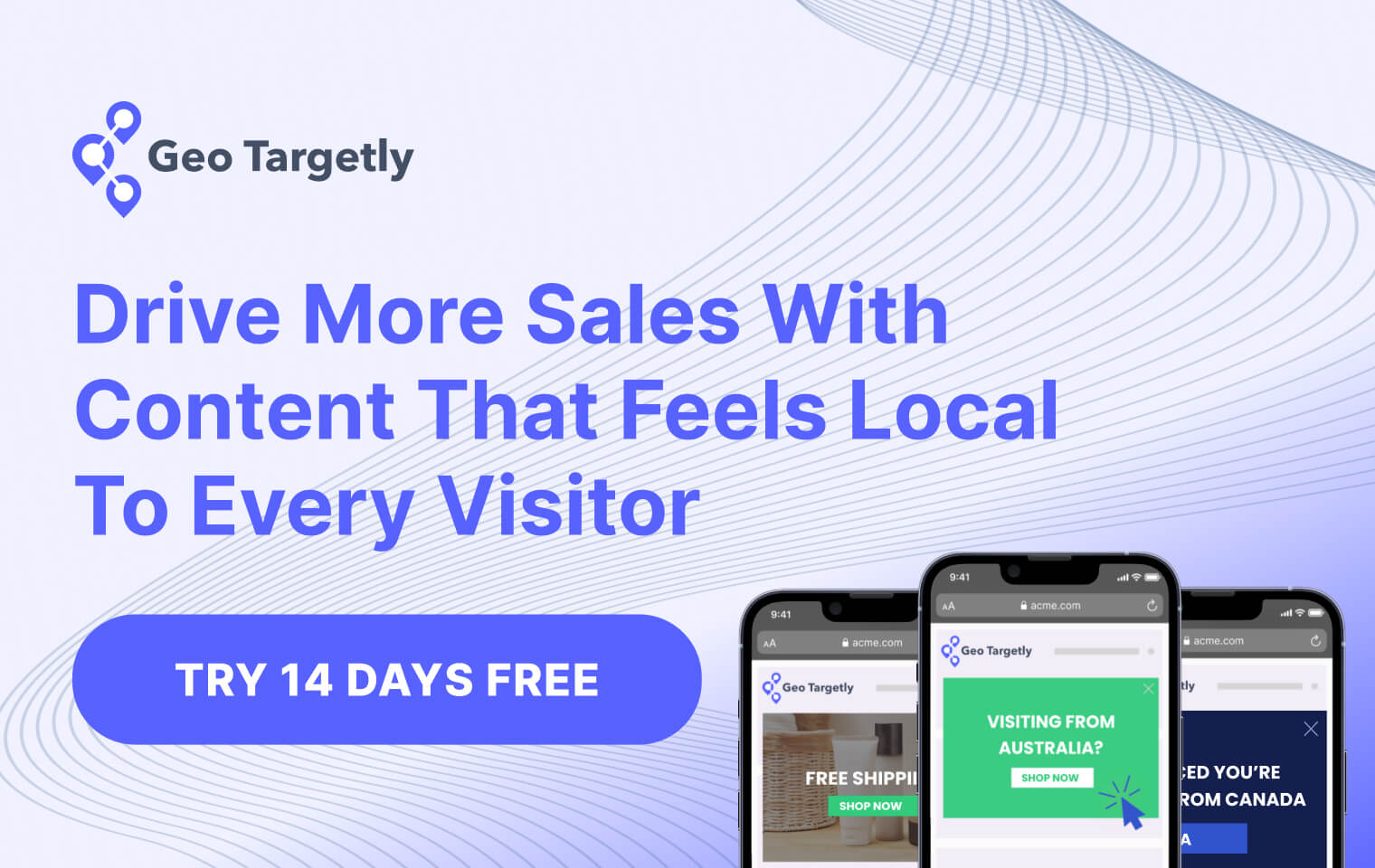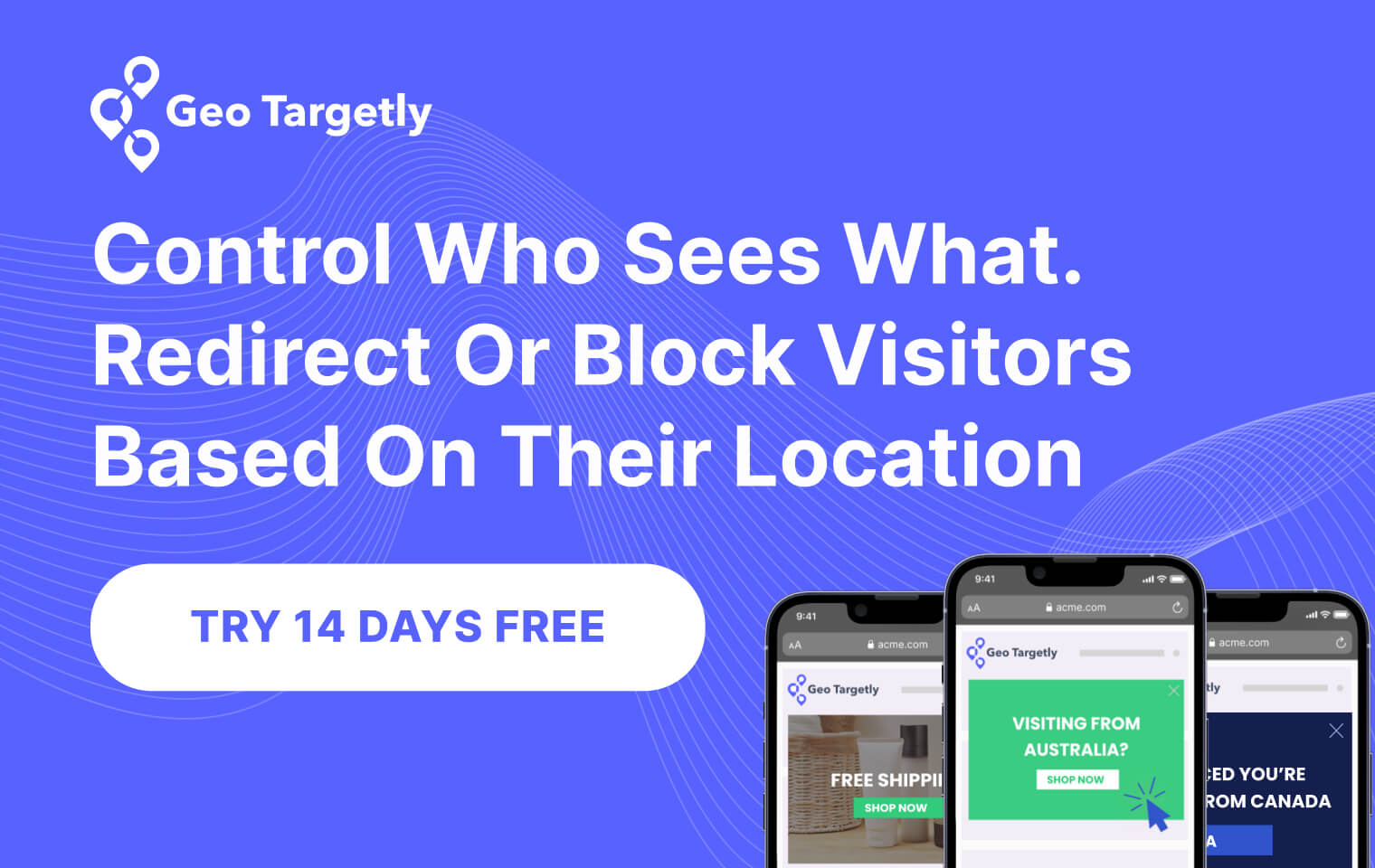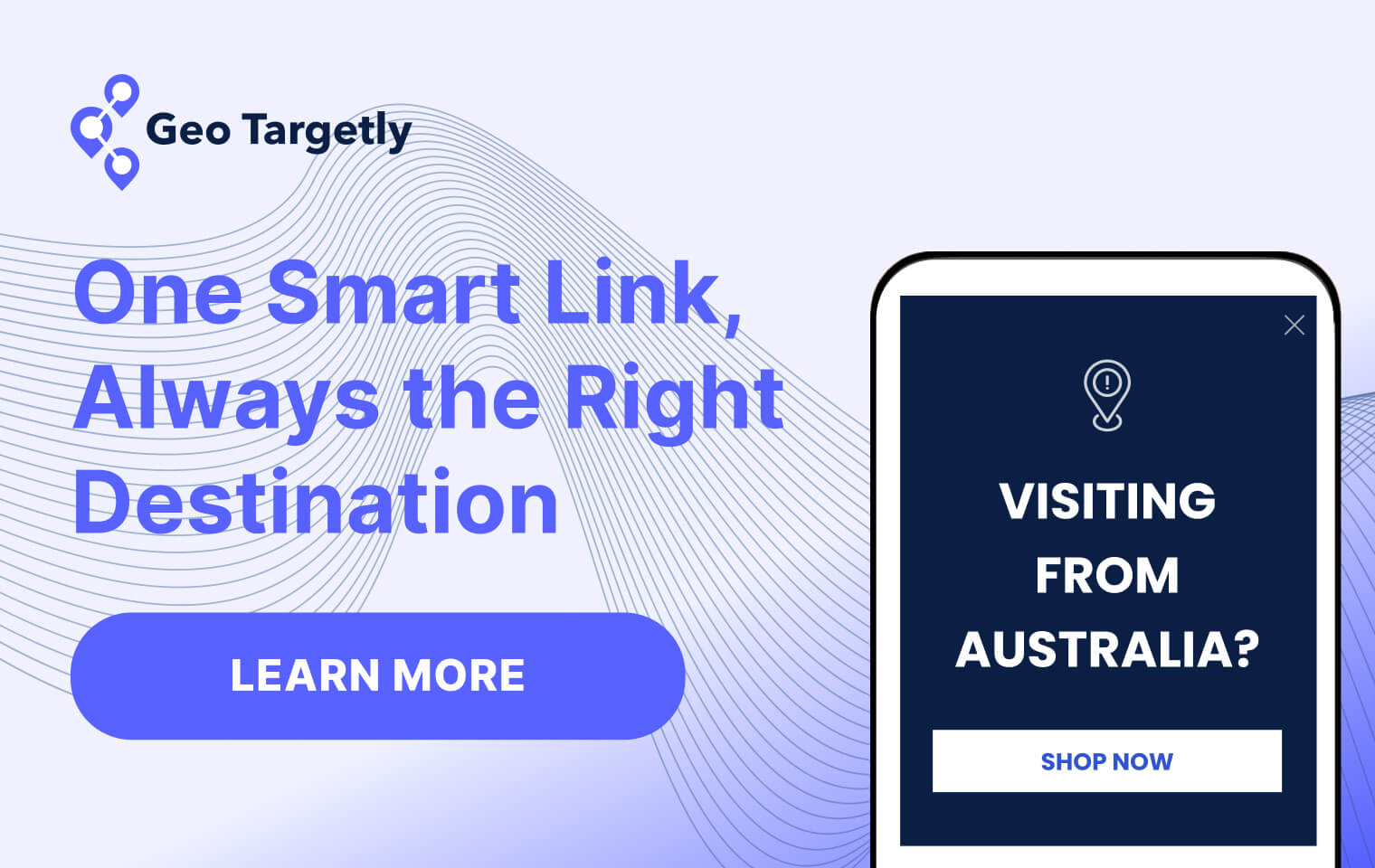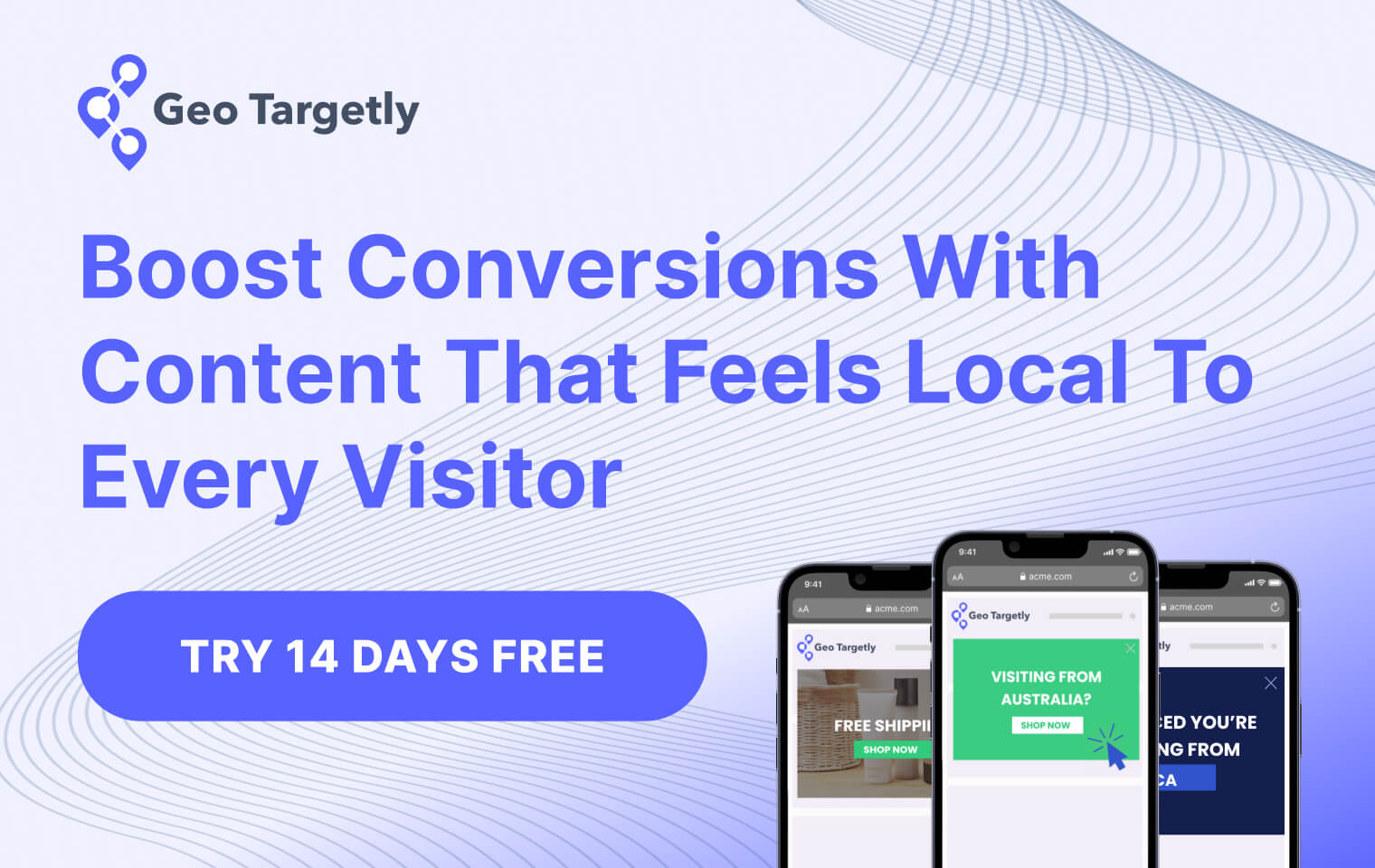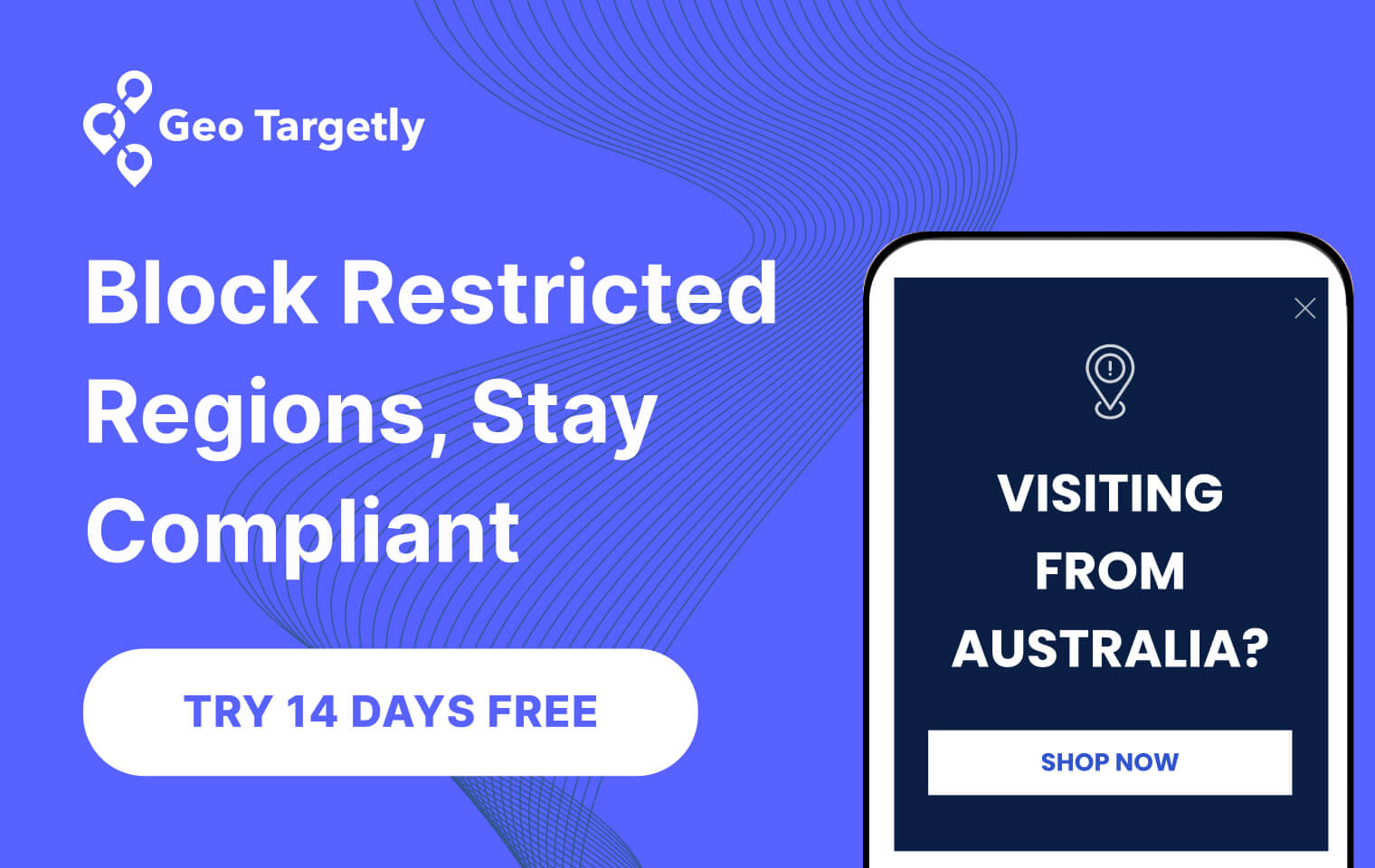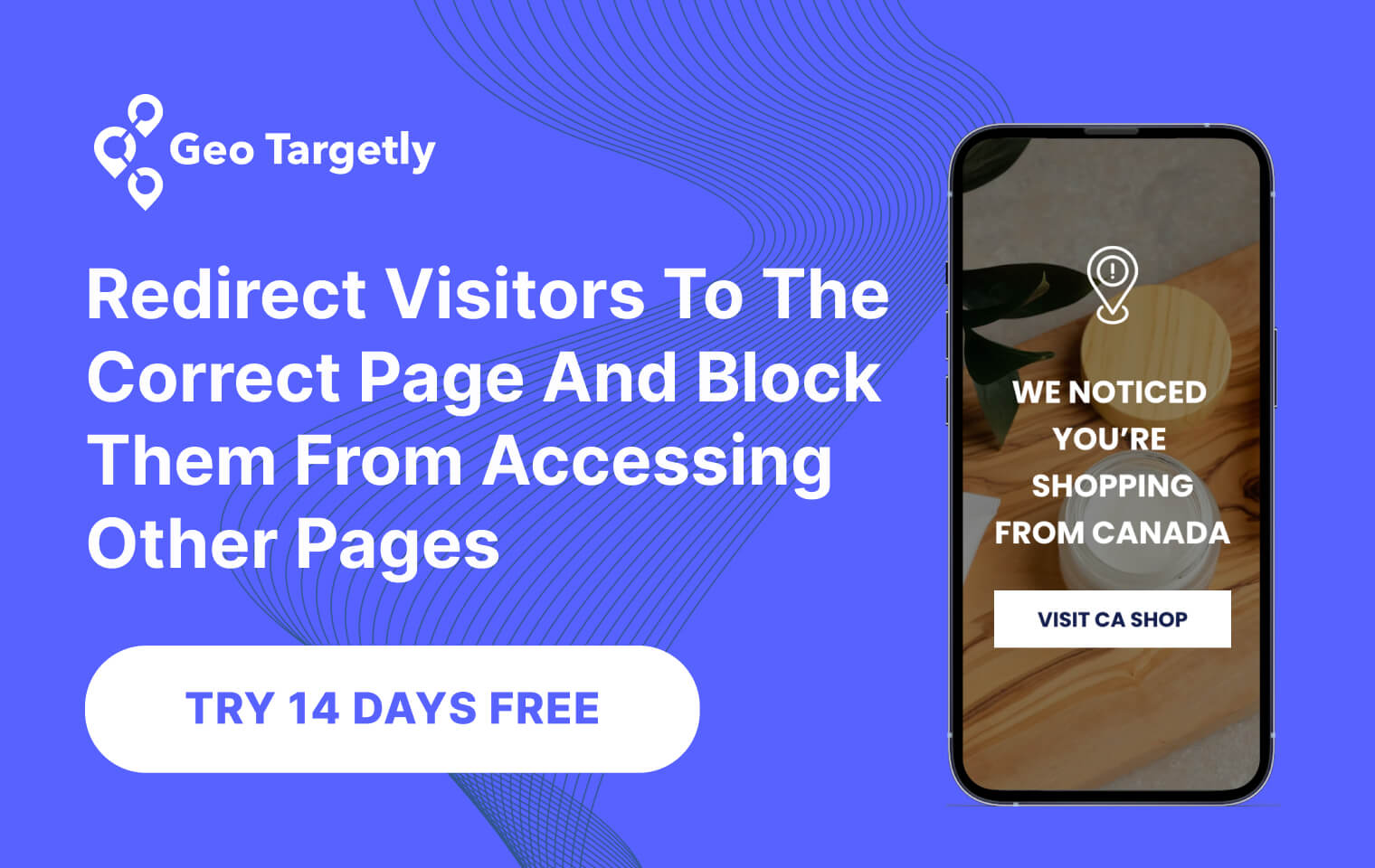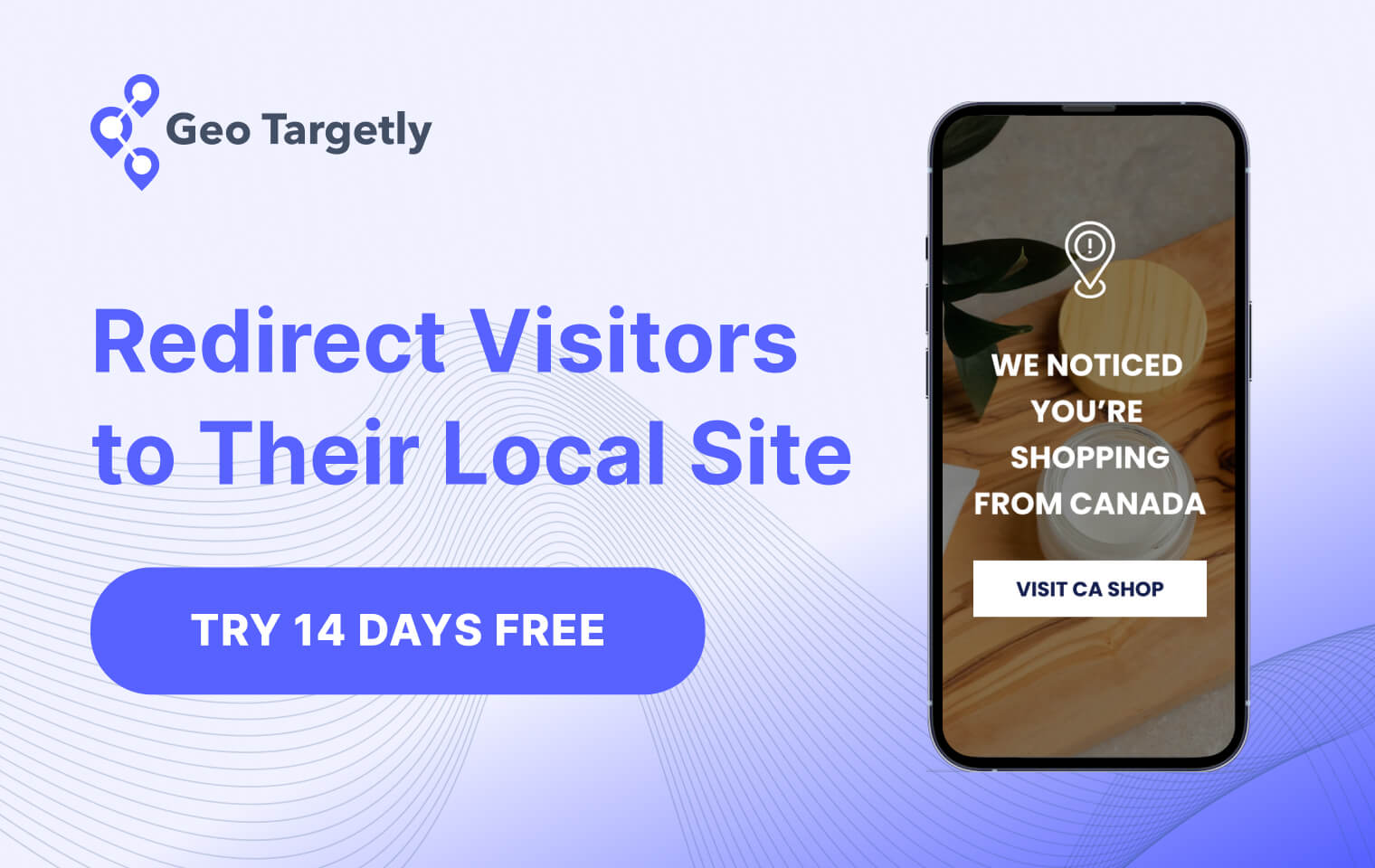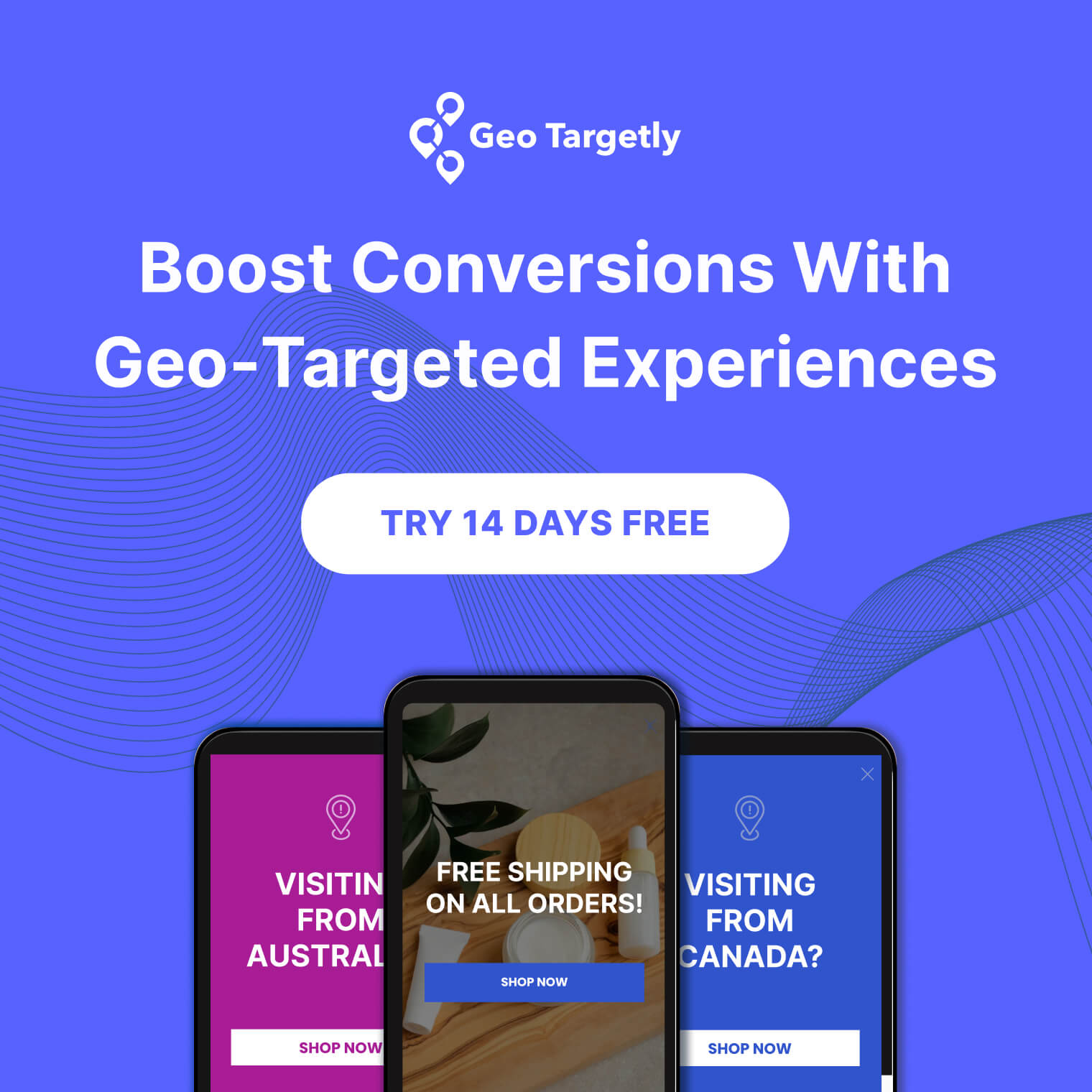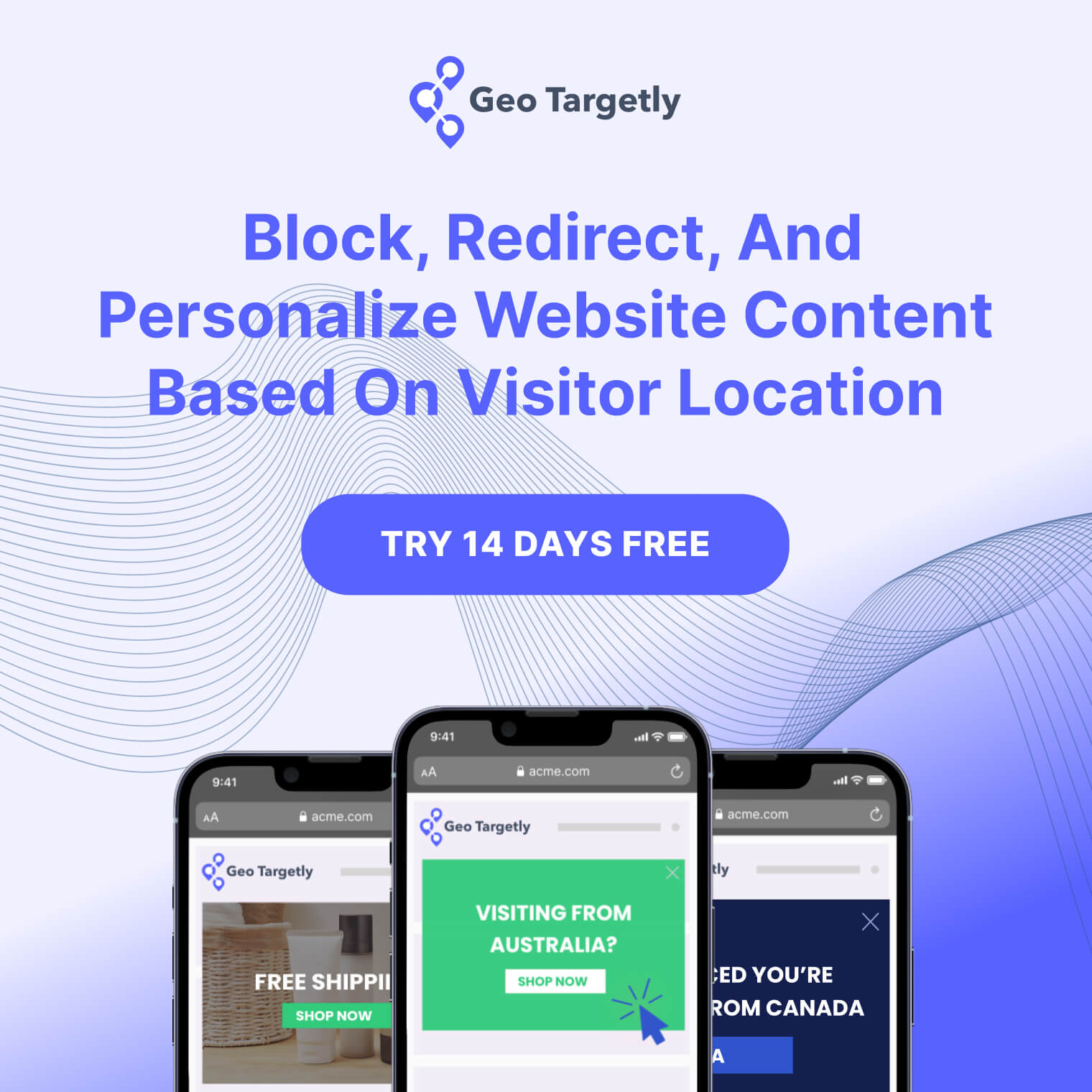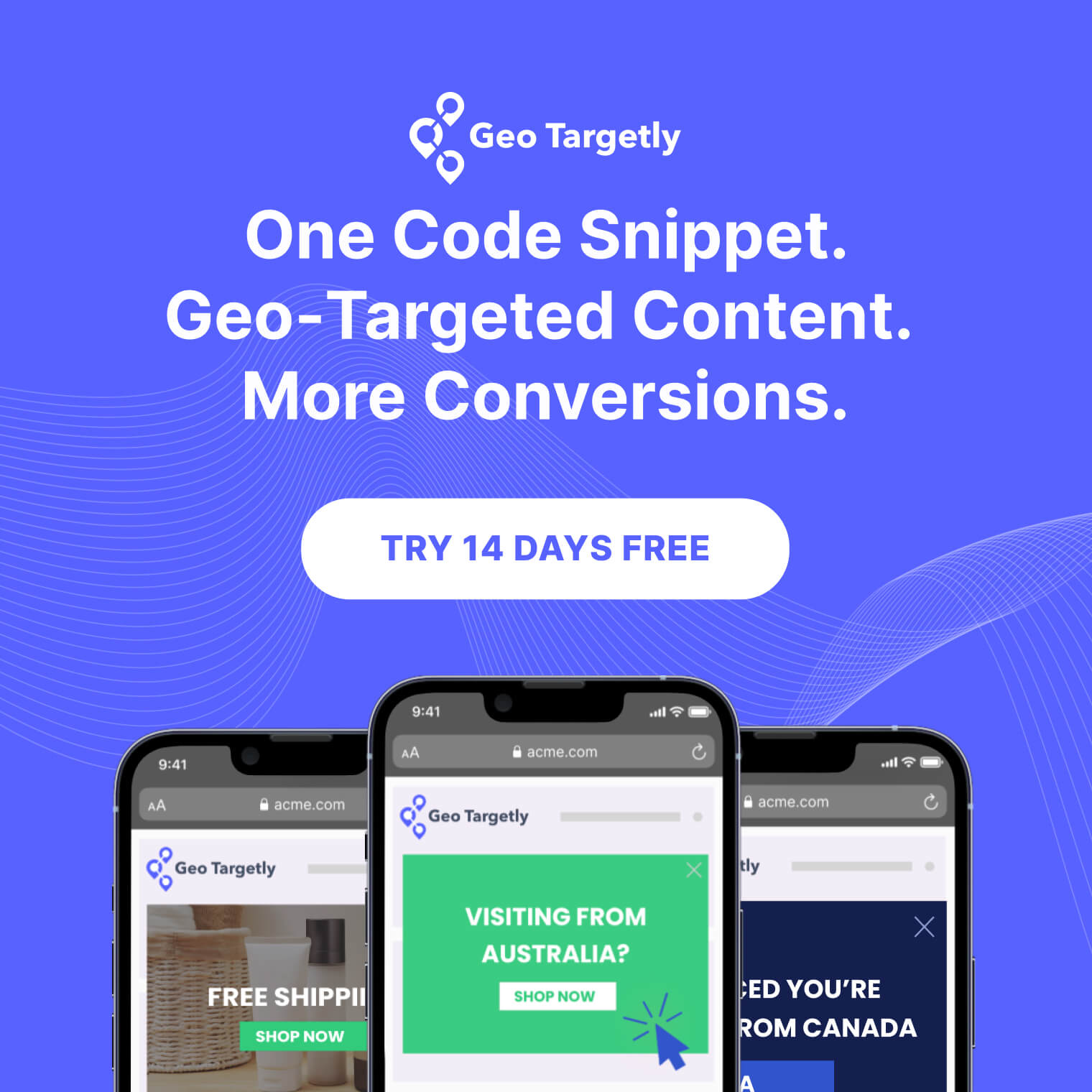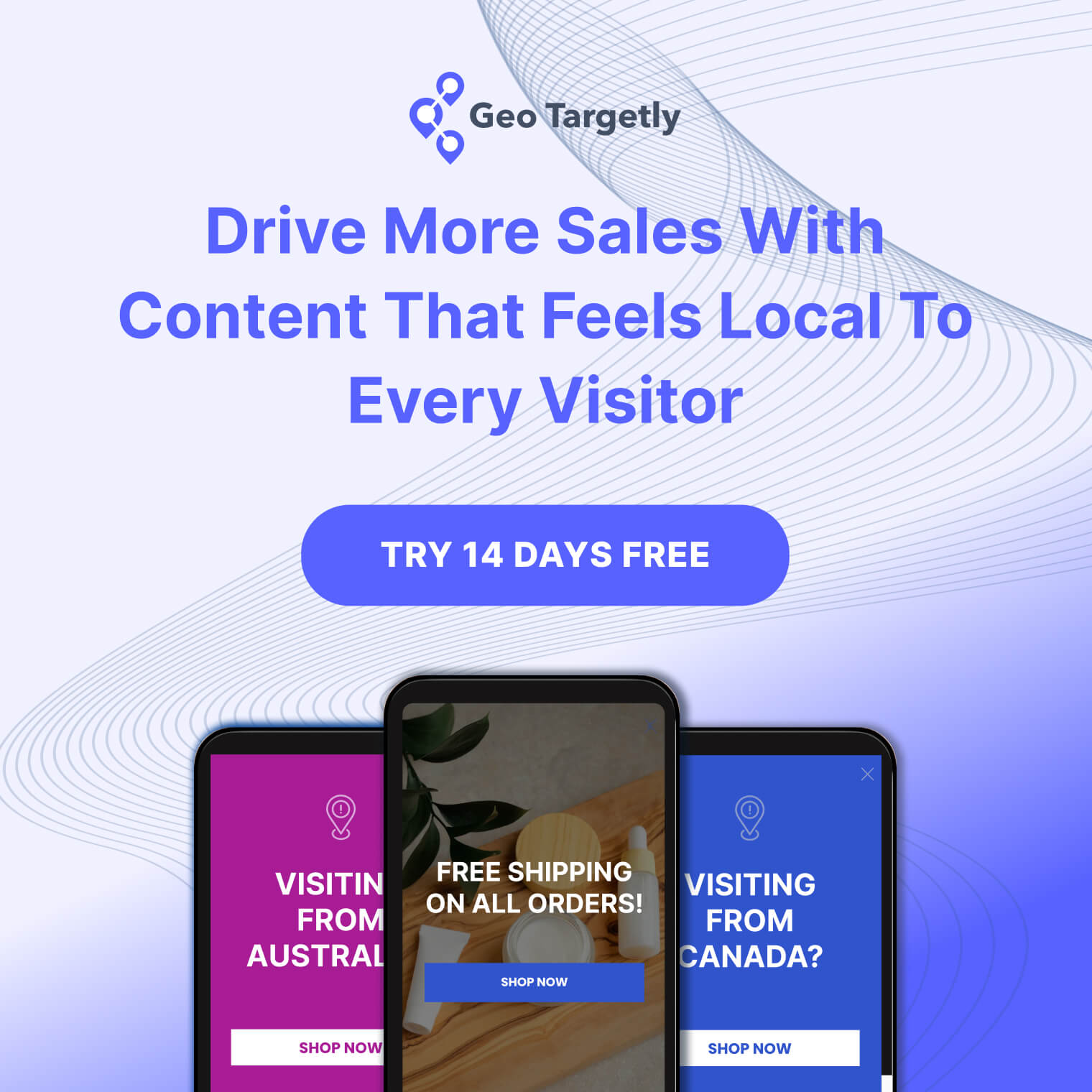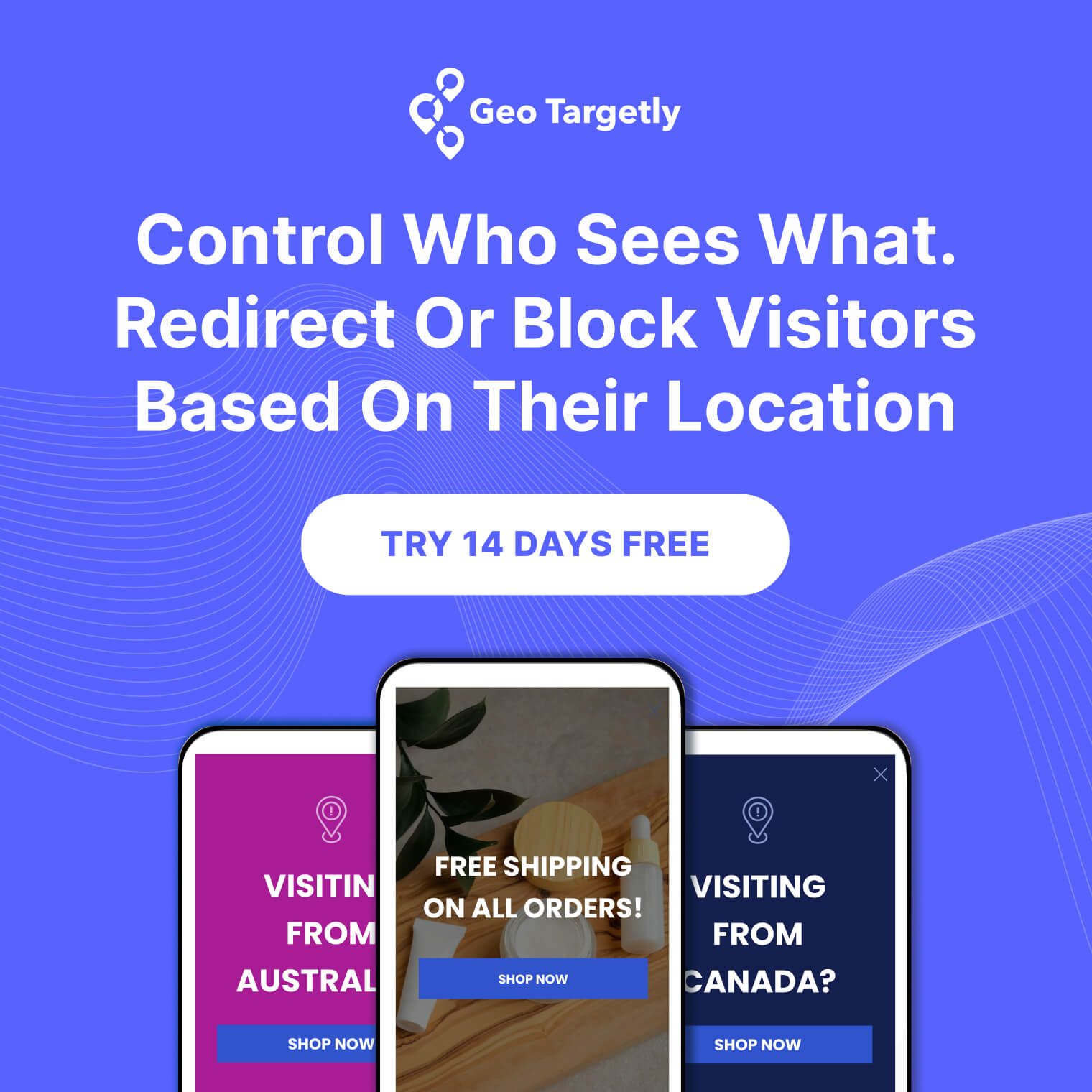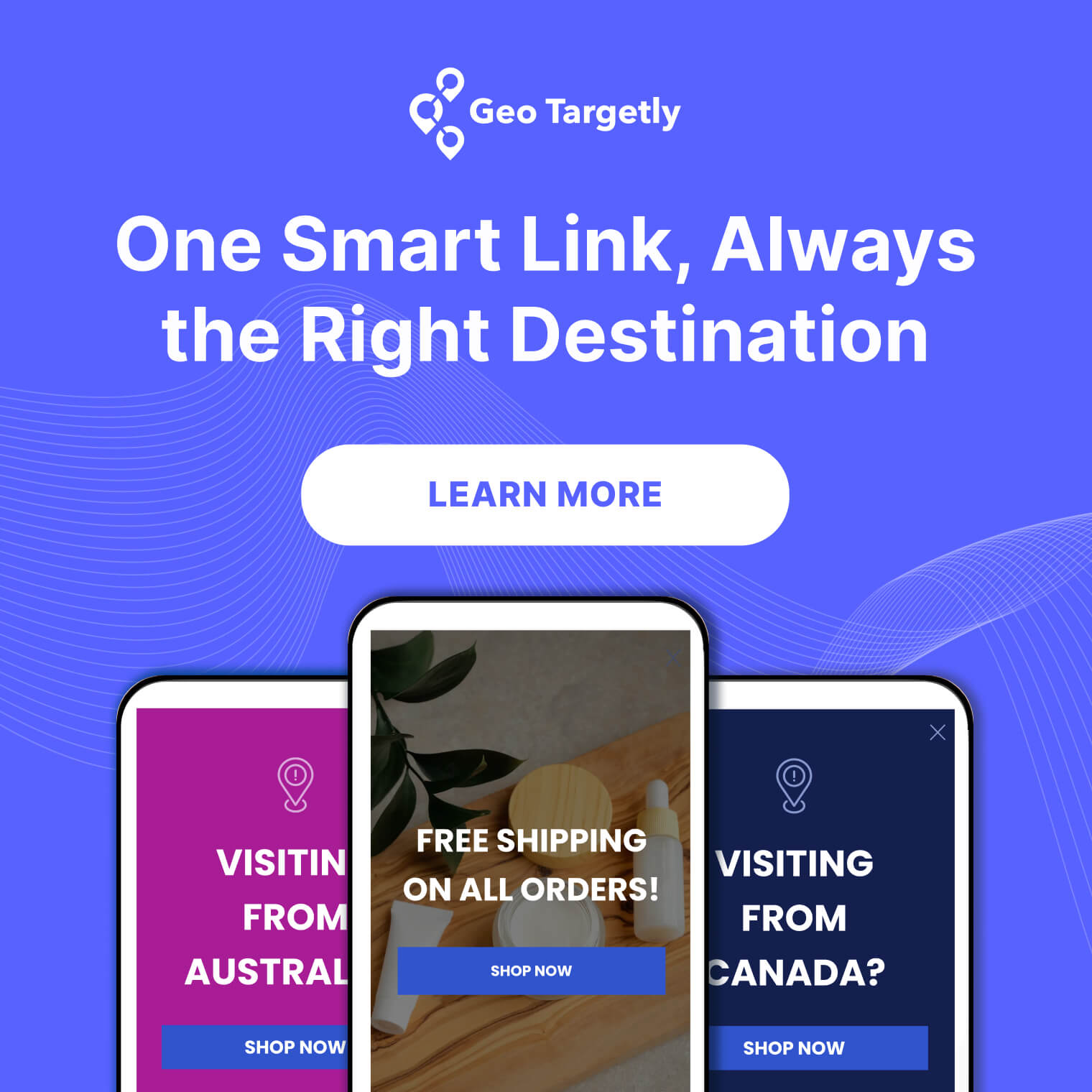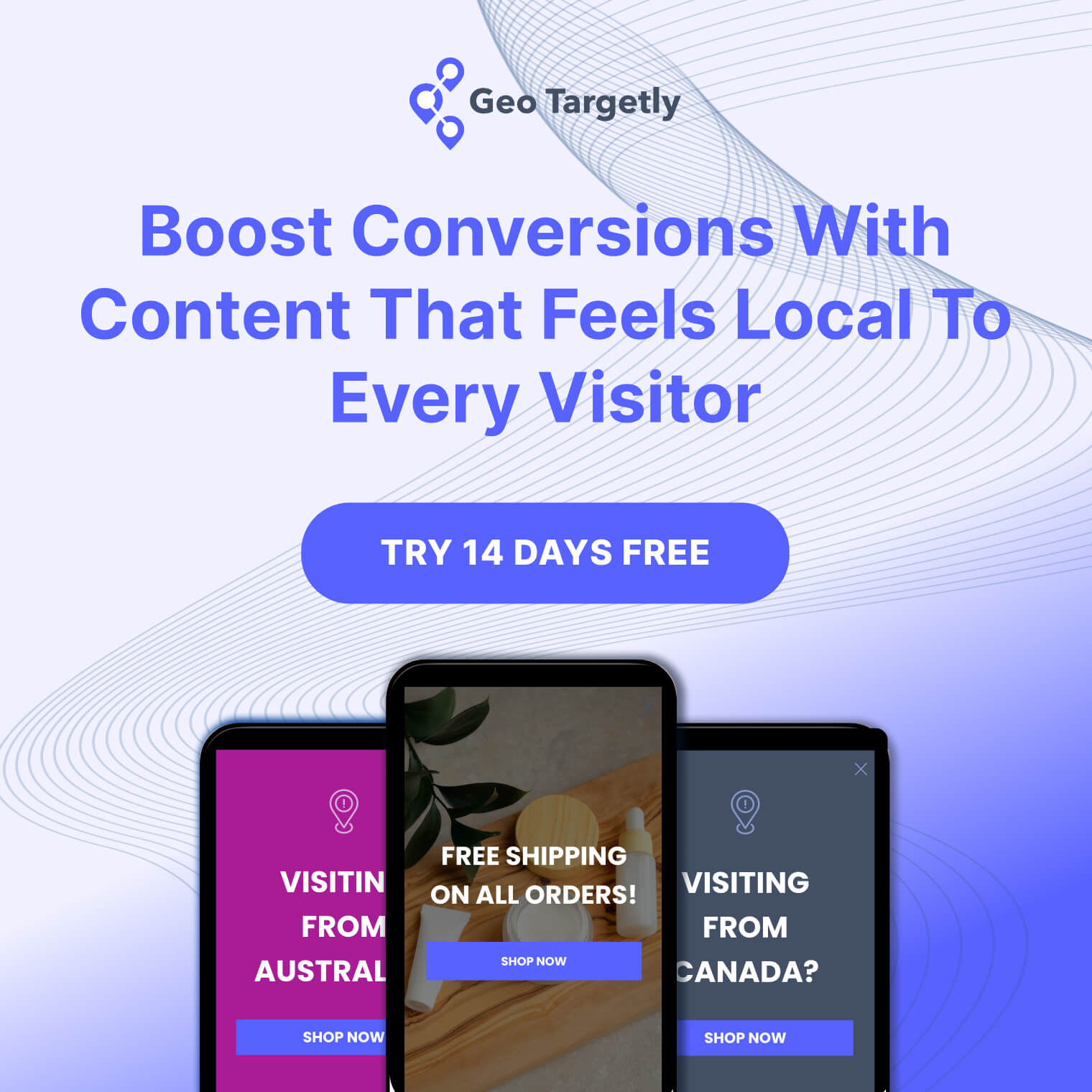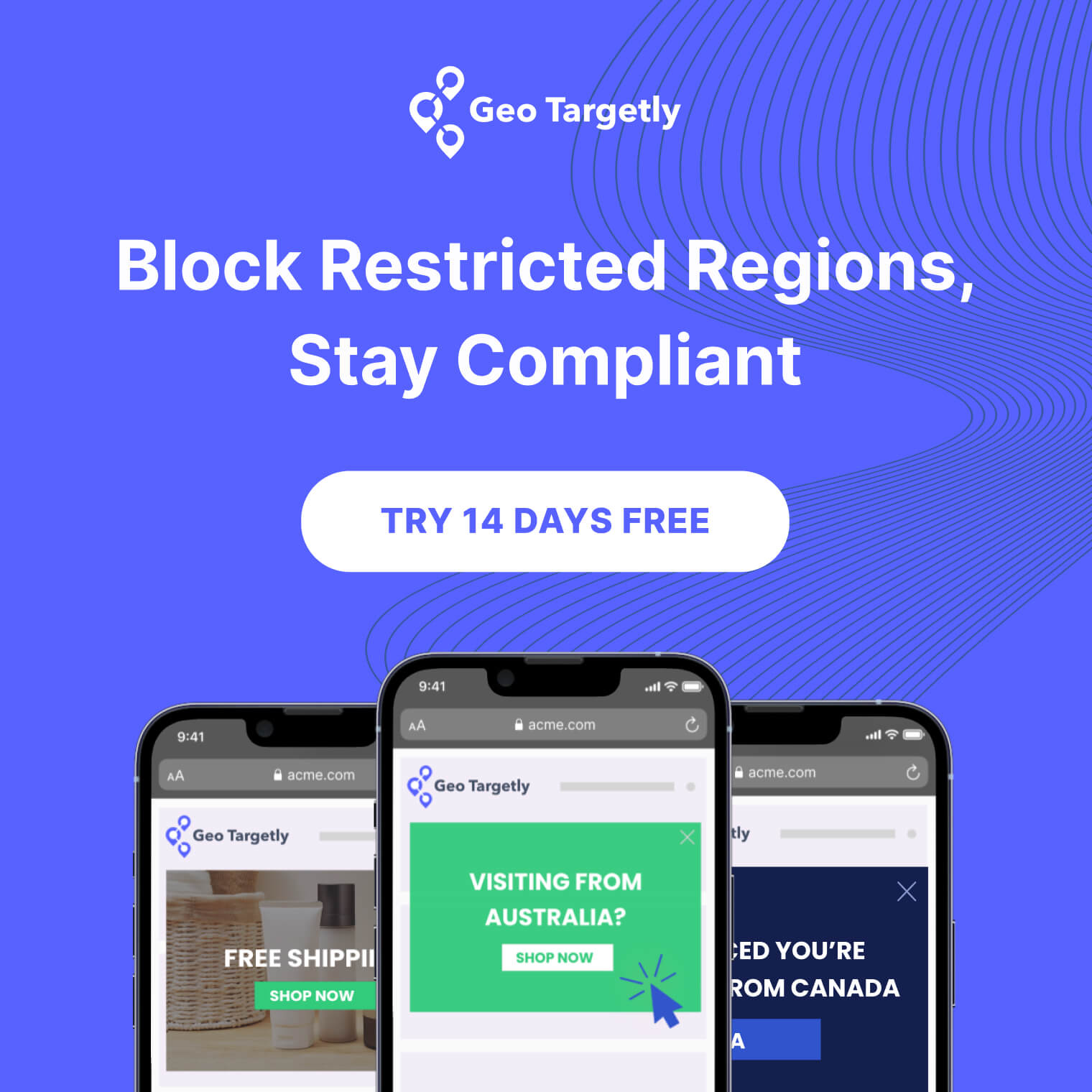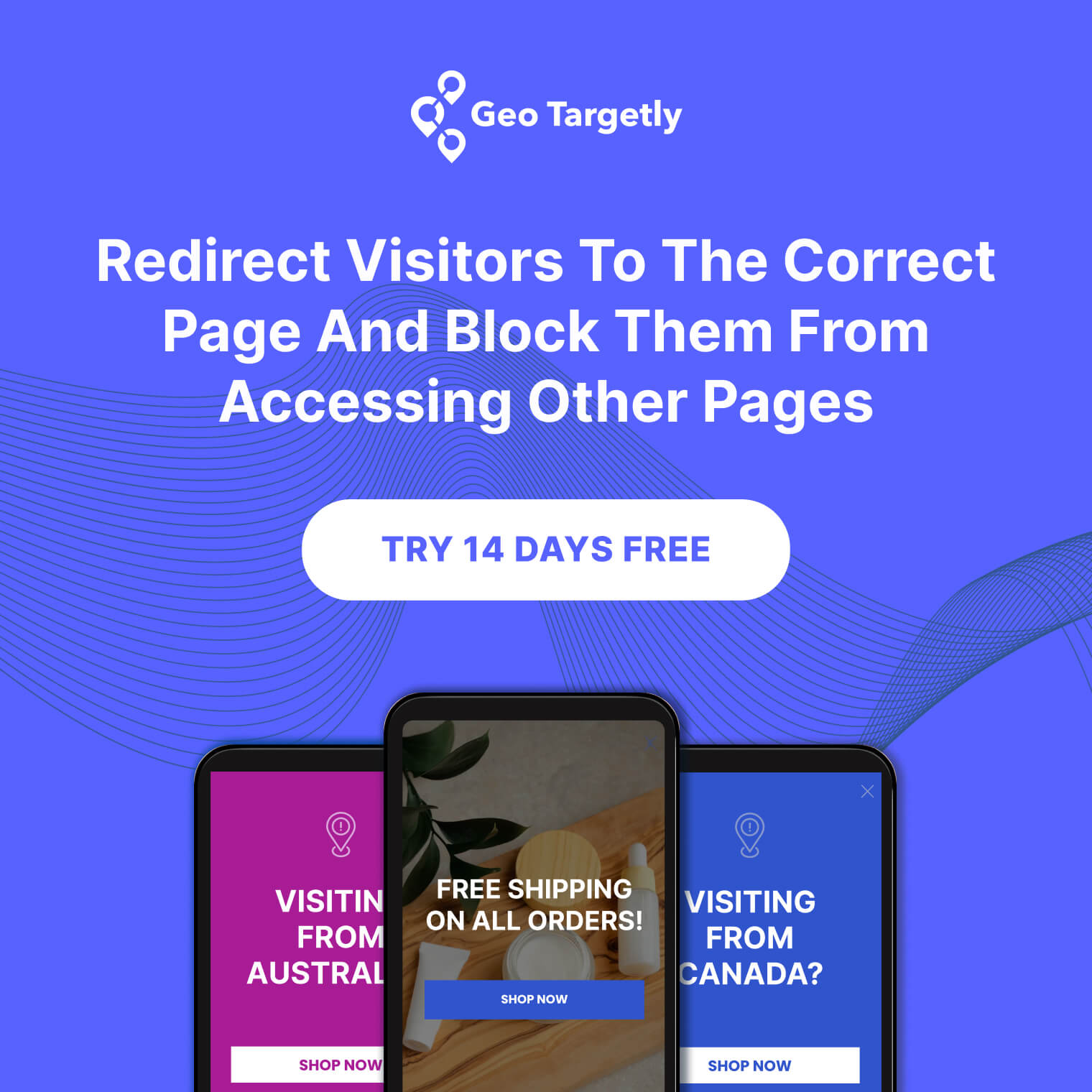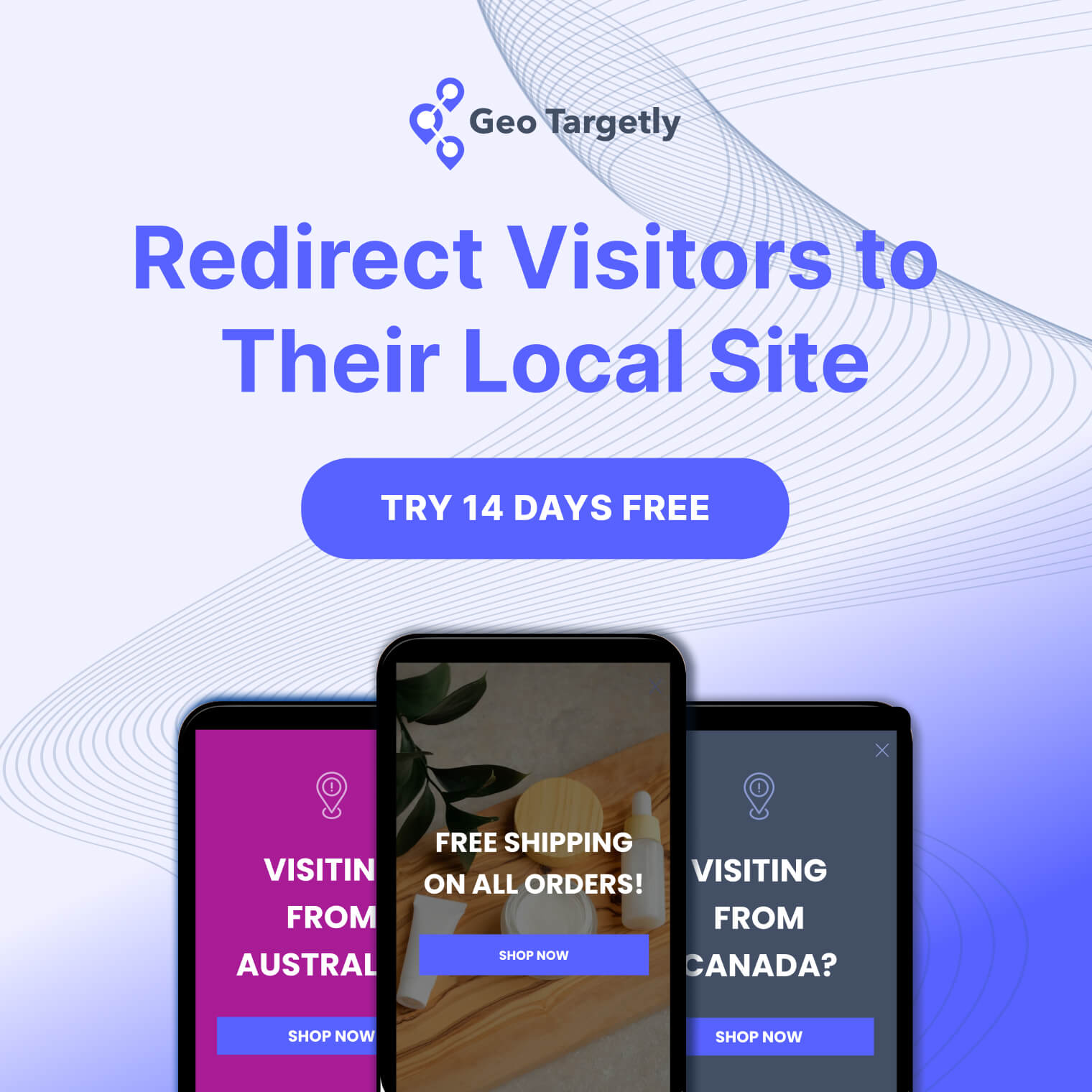

A well-structured event marketing plan is the key to maximizing attendance, engagement, and ROI. Whether you're planning a corporate conference, a product launch, or a hybrid event, having a clear strategy ensures that your event reaches the right audience and achieves its objectives.
Without a plan, marketing efforts can become scattered, leading to low attendance and missed opportunities. A strategic approach helps you define goals, identify your target audience, and execute effective promotional tactics across multiple channels.
Tools like Geo Targetly’s Geo Content feature allow marketers to dynamically personalize event landing pages based on a visitor’s location. This kind of localization can dramatically increase relevance and boost registration rates, especially for multi-city or international events.
In this guide, you’ll learn how to create a results-driven event marketing plan from start to finish. We’ll cover goal setting, audience research, pre-event marketing strategies, and how to measure success after the event.
What is an event marketing plan?
An event marketing plan is a strategic roadmap that outlines how you will promote your event to the right audience, build anticipation, and drive engagement before, during, and after the event. It serves as a guide to help marketers allocate resources effectively and ensure all promotional efforts align with business objectives.
A well-developed event marketing plan includes:
- Defined goals and success metrics – Understanding what you want to achieve (e.g., brand awareness, lead generation, ticket sales).
- Target audience identification – Knowing who your ideal attendees are and what motivates them to participate.
- A multi-channel promotional strategy – Using digital and traditional marketing tactics to maximize event reach.
- Engagement strategies – Encouraging participation before, during, and after the event.
- Post-event evaluation – Measuring key performance indicators (KPIs) to assess success and improve future events.
A structured event marketing plan ensures that every step, from initial promotion to post-event follow-ups, is optimized for maximum impact. Whether you’re hosting an in-person, hybrid, or virtual event, having a clear plan in place allows you to attract the right attendees and create a meaningful experience.
This starts with equipping your team with tools that make real-time engagement more efficient—like digital contact sharing for professionals, which streamlines networking and lead capture on the spot. Alongside that, features like live polling, interactive agendas, and automated check-ins help maintain momentum and drive engagement throughout the event. These tools not only enhance the attendee experience but also provide valuable behavioral insights for organizers. By creating multiple touchpoints—from the first invitation to the final thank-you—you lay the groundwork for a more cohesive and impactful follow-up strategy.
1. Setting clear event goals & objectives
Before launching any marketing efforts, you need to define what success looks like for your event. Without clear goals, it’s difficult to measure progress, optimize your strategy, or determine whether your event was truly effective. Every decision—from how you allocate your budget to which promotional channels you use—should be driven by well-defined objectives.
Why defining event goals is essential
A strong event marketing plan starts with clear objectives because they provide a roadmap for your strategy. Well-defined goals help:
- Guide decision-making – When you know your priorities, you can focus on strategies that directly contribute to achieving them.
- Measure success effectively – Tracking key performance indicators (KPIs) ensures you can evaluate what worked and what needs improvement.
- Optimize time and resources – A focused approach prevents wasted effort on tactics that don’t align with your goals.
- Enhance attendee experience – Understanding what you want attendees to gain from the event ensures your programming meets their needs.
For example, if your goal is lead generation, your marketing strategy should focus on attracting qualified prospects, creating opportunities for interaction, and ensuring follow-ups after the event. If your goal is brand awareness, your marketing efforts may prioritize press coverage, social media engagement, and influencer partnerships.

Defining success: Common event metrics
Success looks different for every event, depending on its purpose. Some of the most important metrics to consider include:
- Attendance Numbers – The total number of registrants, actual attendees, and check-in rates.
- Engagement Levels – Social media mentions, live polling participation, and app interactions.
- Lead Generation – The number of new leads captured, demo requests, or networking connections.
- Revenue Impact – Ticket sales, sponsorships secured, or post-event purchases.
- Brand Awareness – Website traffic, press mentions, and social media growth.
Choosing the right success metrics ensures that your marketing efforts are aligned with your event’s primary purpose.
Aligning event goals with business objectives
An event should support broader business objectives, whether that’s increasing sales, strengthening client relationships, or enhancing industry authority. Your event marketing plan should be designed to drive results that directly impact your company’s bottom line.
Here are a few examples of how event goals can align with business objectives:
- A corporate conference might focus on building brand authority and generating high-value leads.
- A product launch may prioritize driving media coverage and pre-orders.
- A trade show appearance could emphasize customer engagement and partnerships.
When setting event goals, it’s important to ask:
- What outcome will provide the most value to our business?
- What do we want attendees to do during or after the event?
- How will we measure whether the event was successful?
The more closely aligned your event goals are with your company’s larger strategy, the more impactful your marketing efforts will be.
Using the SMART goal framework
One of the best ways to create actionable and effective event goals is to follow the SMART criteria:
- Specific – Clearly define what you want to achieve. Instead of “increase event attendance,” say “increase registrations by 20% compared to last year.”
- Measurable – Your goal should include numbers or benchmarks that allow you to track progress.
- Achievable – Set realistic goals based on historical data and available resources. If last year’s attendance was 500, aiming for 5,000 might not be feasible.
- Relevant – Ensure your goal aligns with business priorities. If your company wants to break into a new market, your event strategy should focus on reaching and engaging that audience.
- Time-bound – Assign a deadline to your goal, such as “reach 1,000 registrations within the first three months of promotion.”
By following this structure, your event marketing plan will be built on clear, measurable objectives that guide your promotional efforts and ensure success.

2. Identifying your target audience
Understanding who your event is for is just as important as knowing what the event is about. Without a well-defined target audience, even the best marketing strategies can fall flat. A successful event marketing plan is built around reaching the right people—those most likely to attend, engage, and benefit from your event.
By identifying your target audience early, you can tailor your messaging, marketing channels, and engagement strategies to attract the right attendees and maximize participation.
How to conduct audience research
To market your event effectively, you need data-driven insights into your potential attendees. Here are a few research methods to help you better understand your audience:
- Analyze past event data – If you’ve hosted similar events before, review attendee demographics, registration trends, and engagement metrics.
- Leverage website and social media analytics – Platforms like Google Analytics, Facebook Insights, and LinkedIn Analytics can reveal key audience details, including location, age, and interests.
- Survey your existing audience – If you have a mailing list or social media following, send out a short survey to understand what they’re looking for in an event.
- Monitor industry trends and competitors – Look at similar events in your industry. Who attends? What kind of content or speakers attract engagement?
- Engage directly with your community – Join industry forums, LinkedIn groups, or Twitter discussions to see what topics and event formats interest your audience.
Tip: The more specific your audience research is, the more effective your marketing efforts will be. Instead of targeting “business professionals,” narrow it down to “mid-level marketing managers in tech companies looking for networking opportunities.”
Creating audience personas
Once you’ve gathered enough research, creating audience personas helps personalize your marketing approach. An audience persona is a detailed profile of your ideal attendee, including their demographics, interests, pain points, and motivations.
Each persona should include:
- Basic demographics – Age, gender, job title, industry, geographic location.
- Event-related interests – What topics, speakers, or activities would attract them?
- Challenges and pain points – What problems does your event help them solve?
- Preferred communication channels – Do they engage more with email, LinkedIn, Instagram, or direct invitations?
Example Audience Persona:
🚀 Persona Name: Marketing Manager Mike
- Age: 35-45
- Industry: B2B Technology
- Challenges: Struggles to keep up with emerging marketing trends and build valuable industry connections.
- Event Goals: Wants to learn about new digital marketing strategies and network with peers.
- Preferred Marketing Channels: Email newsletters, LinkedIn ads, and industry podcasts.
Creating two or three well-defined personas allows you to tailor your messaging, event content, and promotions to the right audience segments, making your marketing efforts far more effective.
Understanding audience pain points and interests
Knowing your audience’s pain points ensures that your event provides real value. People attend events because they want to solve a problem, gain new insights, or expand their network—your job is to position your event as the perfect solution.
Some common audience pain points include:
- Lack of industry knowledge – They need expert insights and training.
- Limited networking opportunities – They want to connect with like-minded professionals.
- Time constraints – They need a well-organized event that delivers value efficiently.
- Budget concerns – They are looking for affordable or high-ROI events.
Tip: Use your marketing messages to speak directly to these pain points. Instead of simply advertising a “business conference,” highlight what attendees will gain:
✔️ “Learn cutting-edge marketing strategies from top industry experts.”
✔️ “Connect with 500+ professionals in your field and grow your network.”
By addressing their needs in your event marketing plan, you make attending your event feel essential rather than optional.
Defining your target audience isn’t just about who might be interested—it’s about who will benefit the most from attending. Conducting audience research, building personas, and understanding attendee pain points will help you craft an event marketing plan that attracts the right people, leading to higher engagement and a more successful event.
Pre-event marketing strategies
Marketing an event doesn’t start the week before—it requires a strategic approach well in advance to build anticipation, generate buzz, and drive registrations. A strong pre-event marketing strategy ensures that you reach your ideal audience at the right time and through the right channels.
The key to success is a multi-channel approach that combines digital and traditional marketing methods to maximize visibility. Whether through online promotions, direct outreach, or industry partnerships, early engagement increases attendance and enhances audience excitement leading up to the event.
Digital promotion channels
Digital marketing plays a central role in event promotion, helping you reach a broader audience efficiently. A well-executed digital strategy can drive traffic, increase engagement, and boost registrations well before the event.
1. Website & landing pages
Your event website or landing page serves as the primary hub for information and registrations. It should be clear, visually engaging, and optimized for conversions.
Key elements to include:
- A compelling event description that highlights key takeaways.
- Easy-to-find registration buttons and a seamless sign-up process.
- Speaker bios, agenda details, and FAQs.
- Social proof such as testimonials, sponsor logos, or past event highlights.
Tip: Use countdown timers or limited-time ticket pricing to create urgency and encourage early registrations.
2. Email marketing & segmentation
Email remains one of the most effective ways to nurture potential attendees. Instead of blasting generic emails, segment your audience based on past engagement, interests, and demographics.
For example:
- First-time attendees – Focus on event highlights and why they should join.
- Returning attendees – Personalize emails with past experiences and exclusive offers.
- VIPs or high-value prospects – Offer exclusive access or networking opportunities.
Using an automated email sequence—starting with an announcement, followed by reminders and final-day registration pushes—helps maintain engagement without overwhelming recipients.
3. Social media strategies
Leveraging both organic and paid social media marketing helps spread the word and engage with your target audience. Here’s how:
- Organic engagement: Share behind-the-scenes content, event updates, and countdown posts. Use event hashtags and encourage past attendees to share their excitement.
- Paid campaigns: Run targeted ads on LinkedIn, Facebook, and Instagram to drive registrations. Use retargeting ads to reach users who visited your event page but didn’t sign up.
Tip: Create social media contests or referral programs to encourage attendees to invite colleagues or friends.
4. SEO optimization for event pages
A well-optimized event page improves visibility in search engines, driving organic traffic and attracting attendees who are searching for similar events. Optimize your page with:
- Targeted keywords like “industry networking event in [city]” or “digital marketing conference 2025.”
- Fast-loading pages and mobile-friendly designs.
- Schema markup to improve event listings in search results.
5. Influencer & partnership marketing
Collaborating with industry influencers, speakers, and sponsors can significantly expand your event’s reach. Encourage them to:
- Share personalized posts about their involvement.
- Promote discount codes or referral links to their audience.
- Host pre-event webinars or live Q&A sessions to generate interest.
Building a network of event advocates creates credibility and increases registrations.
Traditional promotion channels
While digital marketing is dominant, traditional marketing methods still play an important role, particularly for local events, corporate audiences, and industry-specific gatherings. These methods help reinforce awareness and reach audiences who may not be as active online.
Tip: If you’re using direct mail, make it interactive: include QR codes that link to your registration page or an exclusive video message from a keynote speaker.
You can also use a tool like Uniqode: Dynamic QR code generator to create smart, trackable QR codes that allow real-time edits to destination URLs.
4. Building a multi-channel promotion strategy
A successful event marketing plan doesn’t rely on just one channel, it strategically combines multiple platforms to maximize reach and engagement. By integrating email, social media, paid advertising, and content marketing, you create a consistent message that reinforces event awareness at every touchpoint. A well-planned multi-channel approach ensures that your audience sees and interacts with your event promotion across different platforms, increasing the likelihood of attendance.
Integrating email, social media, and paid advertising
Each marketing channel plays a unique role in promoting your event. Rather than treating them separately, the key is to create a cohesive strategy where each channel supports the others.
- Email marketing serves as the foundation, keeping registered attendees engaged while nurturing potential participants with reminders, exclusive offers, and valuable event updates.
- Social media generates buzz, encourages user engagement, and provides real-time updates to build excitement.
- Paid advertising amplifies your reach, ensuring your event promotion appears in front of the right audience beyond your organic network.
For example, a well-coordinated campaign might start with an email announcement, followed by social media posts highlighting key speakers, and boosted with targeted LinkedIn or Facebook ads to reach potential attendees outside your existing database.
Tip: Ensure branding and messaging remain consistent across all channels. Using the same visuals, hashtags, and key selling points reinforces your event’s identity and keeps it recognizable.
The role of content marketing in event promotion
Content marketing is a powerful tool in any event marketing plan. Rather than just pushing registrations, content helps educate, engage, and build anticipation. Well-crafted content showcases the value of your event and gives your audience reasons to attend.
Here are a few content types that can enhance your event marketing strategy:
- Blog posts: Write articles on industry trends related to your event’s theme, speaker interviews, or "what to expect" guides.
- Webinars & live Q&As: Host a preview session with keynote speakers or panelists to give attendees a taste of the event experience.
- Video teasers: Create short clips featuring past event highlights, testimonials, or behind-the-scenes preparations to build excitement. Adding subtitles to these videos with tools like Happy Scribe’s English subtitle generator can improve accessibility and engagement, especially on social platforms where videos often autoplay without sound.
- Infographics: Visually appealing content that presents key stats, schedules, or benefits of attending your event.
Content marketing not only attracts attendees but also establishes credibility and positions your event as a must-attend experience.
Tip: Repurpose content across multiple channels. A webinar can be turned into blog highlights, a video snippet for social media, and key takeaways for an email campaign. This maximizes content usage while keeping messaging fresh.
Creating a content calendar for event promotion
Without proper planning, event marketing can feel scattered. A content calendar keeps everything organized, ensuring a steady flow of promotional efforts leading up to the event.
Here’s a sample event content calendar for a three-month campaign:
A structured content calendar prevents last-minute scrambling and ensures a consistent, strategic marketing effort from start to finish.
5. During the event: maximizing engagement
The work doesn’t stop once the event begins. A well-executed event marketing plan includes strategies to keep attendees engaged in real time. The more interactive and immersive the experience, the more memorable the event will be—leading to positive word-of-mouth, increased social media exposure, and a higher likelihood that attendees will return for future events.
A combination of live updates, digital engagement tools, and real-time audience participation ensures that both in-person and virtual attendees stay involved from start to finish.
Live social media updates & live streaming
Live social media coverage extends your event’s reach beyond the physical venue, allowing virtual audiences to participate and keeping registered attendees engaged throughout the day.
Here’s how to maximize live updates:
- Live tweet key takeaways from speakers and panels using your event hashtag.
- Post Instagram & LinkedIn stories with behind-the-scenes footage, interviews, or session highlights.
- Go live on Facebook, LinkedIn, or YouTube for exclusive sessions or Q&A discussions.
- Encourage attendees to share their experience by resharing user-generated content (UGC) and event photos.
Tip: Assign a dedicated social media team or event ambassadors to manage live updates and respond to audience engagement in real time.
Live streaming is also a game-changer, especially for hybrid and virtual events. Broadcasting key sessions allows those who couldn’t attend in person to experience the event remotely, increasing brand exposure. Platforms like Zoom, LinkedIn Live, and YouTube Live make it easy to stream high-quality video content to a wider audience.
Engaging attendees through mobile apps & interactive content
Many events now use event-specific mobile apps to enhance attendee experience. These apps serve as a central hub for:
- Agenda tracking – Attendees can personalize their schedules and receive reminders.
- Networking opportunities – Features like AI-powered matchmaking, direct messaging, and virtual meetups enhance connections.
- Interactive features – Gamification, surveys, and real-time notifications keep attendees engaged.
Tip: If a dedicated event app isn’t feasible, leverage existing platforms like Slack, WhatsApp, or private LinkedIn groups for communication and networking.
Additionally, interactive content—such as on-screen quizzes, live polling, and digital scavenger hunts—keeps energy levels high. The more participants feel involved, the more invested they become in the event experience.
Encouraging real-time audience participation
A passive audience quickly disengages, so it’s crucial to involve attendees in meaningful ways. Real-time interaction tools create a two-way conversation and boost engagement levels.
Strategies to encourage participation:
- Live Polling & Q&A Sessions – Platforms like Slido or Mentimeter allow attendees to ask questions, vote on discussion topics, or provide feedback instantly.
- Gamification – Leaderboards, trivia contests, and interactive challenges encourage participation and friendly competition.
- Hashtag Challenges & Social Media Contests – Reward attendees who share event highlights, tag speakers, or complete engagement tasks.
Tip: Offer small incentives—like VIP meet-and-greets, free event merchandise, or discounts for future events—to encourage maximum participation.
6. Post-event follow-up & measuring success
A successful event marketing plan doesn’t end when the last session wraps up. The post-event phase is crucial for gathering insights, maintaining attendee engagement, and ensuring long-term impact. Following up with attendees, analyzing key performance indicators (KPIs), and repurposing event content helps solidify your event’s success and improves future planning.
Sending post-event surveys & gathering feedback
One of the best ways to assess your event’s impact is by directly asking attendees for feedback. A well-crafted post-event survey provides insights into what worked, what didn’t, and how to improve future events.
To encourage participation, keep the survey concise (5-10 questions) and send it within 24-48 hours of the event while the experience is still fresh.
Survey questions might include:
- Overall experience: “On a scale of 1-10, how satisfied were you with the event?”
- Content relevance: “Which session(s) did you find most valuable and why?”
- Speaker engagement: “Were the speakers engaging and knowledgeable?”
- Logistics & organization: “How would you rate the venue, technology, or accessibility?”
- Suggestions for improvement: “What would you like to see in future events?”
Tip: Offer an incentive, such as a discount on future events or entry into a giveaway, to encourage more responses.

Analyzing key event KPIs
Beyond attendee feedback, tracking data-driven metrics helps measure the true success of your event. The right KPIs depend on your event’s goals, but some common ones include:
Tip: Compare these KPIs against previous events or industry benchmarks to identify trends and areas for improvement.
How to leverage post-event content
Your event may be over, but the content generated from it still holds value. Repurposing post-event content keeps engagement going and provides ongoing marketing opportunities.
- Recap blogs & articles: Write a summary covering key takeaways, speaker insights, and standout moments.
- Highlight reels: Create a short video with clips from sessions, interviews, and attendee reactions to showcase the event’s energy.
- Testimonials & case studies: Collect attendee quotes and speaker feedback for future event promotions.
- On-demand content: Offer recorded sessions as exclusive content for those who couldn’t attend live.
Tip: Continue engagement by inviting attendees to join a post-event LinkedIn group, subscribe to a newsletter, or register early for the next event.
Event marketing plan template & checklist
A well-structured event marketing plan keeps your team organized and ensures no critical steps are overlooked. Having a clear roadmap helps streamline efforts, improve communication, and maximize your event’s impact. Below, you'll find an event marketing plan template followed by a checklist to ensure all key components are covered.
Event marketing plan template
Use this template as a starting point to structure your event marketing efforts. Customize it based on your event’s goals, audience, and promotional strategy.
📌 Event overview
- Event Name: [Your Event Name]
- Event Date(s): [Event Date]
- Event Type: [In-Person, Virtual, Hybrid]
- Event Goal(s): [e.g., Brand Awareness, Lead Generation, Ticket Sales]
- Target Audience: [Define primary and secondary audience segments]
- Key Performance Indicators (KPIs): [Define measurable success metrics]
📌 Pre-event marketing strategy
- Website & landing page:
- Create a dedicated event landing page with a clear CTA.
- Optimize the page for SEO.
- Email marketing:
- Develop an email sequence (announcement, reminders, last-chance registration).
- Segment the audience for targeted messaging.
- Social media promotion:
- Develop a social media content calendar.
- Run paid ads targeting key demographics.
- Partner with influencers and sponsors for promotion.
- Traditional marketing tactics (if applicable):
- Print advertising, direct mail, sponsorship outreach.
📌 Event engagement strategy
- Live social media updates & streaming:
- Assign a team to post real-time updates, session highlights, and attendee interactions.
- Set up live streaming for key sessions.
- Audience interaction & engagement:
- Use mobile apps for networking and engagement.
- Incorporate polls, Q&A, and gamification to boost participation.
📌 Post-event strategy
- Attendee follow-up:
- Send post-event surveys to gather feedback.
- Share thank-you emails and exclusive content with attendees.
- Performance analysis:
- Measure event KPIs (attendance, engagement, lead generation).
- Compare results with past events to identify improvements.
- Repurposing content:
- Publish event recap blog posts and social media highlights.
- Share recorded sessions for on-demand viewing.
Event marketing plan checklist
A simple checklist helps track progress and ensure all crucial steps are completed. Use this as a quick reference guide while executing your event marketing plan.
Using a structured event marketing plan template and checklist ensures a smooth, well-organized marketing campaign. By mapping out goals, strategies, and key actions in advance, you set your event up for success while keeping your team aligned and focused.
How Geo Targetly can help with event marketing
Successful event marketing requires precision—reaching the right audience, delivering relevant content, and making the registration process as seamless as possible. Geo Targetly provides advanced geolocation-based marketing solutions that help event organizers personalize promotions, improve ad performance, and enhance the attendee experience. By using geotargeting, you can increase event attendance, boost engagement, and optimize conversions for both virtual and in-person events.
Geo-targeted event promotions
One of the biggest challenges in event marketing is ensuring that promotions reach the right audience at the right time. Geo Targetly allows marketers to tailor event promotions based on a user’s location, making them more relevant and engaging. Instead of using a one-size-fits-all approach, event organizers can automatically display event details specific to a user’s city or country.
For example, if a company is hosting a series of conferences across multiple locations, a visitor from New York will see information about the NYC event, while someone from London will see details for the UK conference.
This prevents confusion, increases event sign-ups, and ensures that attendees receive the most relevant information from the moment they land on the event page.
Another advantage of geo-targeted promotions is the ability to create localized ads and promotions for different regions. Instead of running a broad advertising campaign, marketers can launch location-specific promotions, such as early-bird discounts for attendees within a certain radius of the venue or exclusive VIP packages for local businesses.
This approach not only increases engagement but also makes attendees feel like the event is tailored to their needs.
Dynamic landing pages for a seamless user experience
A generic event landing page can create friction for potential attendees, especially if an event has different dates, locations, or pricing structures. Geo Targetly solves this issue by dynamically adjusting landing pages based on the visitor’s location.
This means that attendees from different cities or countries are automatically directed to the most relevant event page, eliminating the need for users to navigate through multiple pages.
For example, a global event series with multiple venues in different countries can have a single landing page that dynamically updates content depending on where the visitor is located.
Instead of manually managing multiple event pages, organizers can use Geo Targetly to personalize event details, pricing, and schedules automatically. This not only improves the user experience but also increases conversion rates by making the registration process more intuitive.
Additionally, language and currency preferences can be adjusted based on the visitor’s location, making international event marketing more seamless. Rather than displaying USD pricing to a European audience, Geo Targetly can automatically switch the currency to euros, creating a more localized experience.
Localized advertising for higher PPC and social media ROI
Running paid advertising campaigns for event marketing can be costly, especially when targeting broad or irrelevant audiences. Geo Targetly enhances PPC and social media advertising by ensuring that ads are only shown to users in specific cities, states, or countries where the event is taking place.
Instead of spending budget on users who aren’t in the right location, event marketers can focus ad spend on people who are more likely to attend. This leads to:
- Lower cost-per-click (CPC): By narrowing the audience, ad spend is optimized, ensuring better ROI.
- Higher conversion rates: Users see event promotions tailored to their location, making them more likely to engage.
- More effective retargeting campaigns: Geo Targetly allows marketers to retarget users from specific geographic areas who visited an event page but didn’t register.
For example, a business conference in San Francisco could target professionals within a 50-mile radius, while a virtual event for Canadian entrepreneurs could restrict ad placements to users in Canada. This level of precision ensures marketing budgets are spent efficiently, maximizing event visibility without unnecessary ad waste.
Geo-based redirection for effortless registration
A common barrier to event registration is forcing users to manually find the correct page for their location. If an event series spans multiple cities or has different registration options based on region, attendees may get confused or frustrated trying to find the right form. Geo Targetly eliminates this problem by automatically redirecting visitors to the correct registration page based on their location.
For example, a user visiting from Los Angeles will automatically be directed to the California event registration page, while someone from Chicago will be taken to the Illinois registration page. This removes extra steps, simplifies the sign-up process, and significantly improves conversion rates.
This is particularly useful for large-scale conferences, multi-city trade shows, and international events where different regions have unique event details, pricing structures, or ticketing options. Instead of creating separate promotional campaigns for each location, marketers can drive traffic to a single landing page, and Geo Targetly will handle the rest, directing visitors where they need to go.
Personalized content delivery for higher conversions
One of the most powerful ways to increase event registrations is through personalized messaging. Generic event promotions may fail to capture an audience’s attention, but Geo Targetly enables event organizers to serve customized content based on location, increasing relevance and engagement.
For example, an event that offers different ticket tiers based on location can automatically show attendees the pricing relevant to their city. A conference with multiple networking sessions can promote region-specific meetups to different users based on their geographical area.
Other ways Geo Targetly enhances personalized event marketing include:
- Showing localized speaker lineups based on regional preferences.
- Displaying city-specific sponsorship packages to local businesses.
- Highlighting transportation or lodging options near an attendee’s location.
By delivering location-specific content, event marketers create a more personalized experience, making attendees feel the event is designed specifically for them.
Post-event engagement with location-based remarketing
The power of geotargeting doesn’t stop when the event ends. Geo Targetly enables post-event remarketing, helping event organizers continue engaging attendees long after the event concludes.
Some ways to use location-based remarketing include:
- Sending personalized follow-up emails with content relevant to attendees from specific regions.
- Promoting region-specific post-event networking sessions or webinars.
- Running retargeting ads encouraging attendees from one city to register for future events in nearby locations.
For example, attendees from a New York event can be targeted with promotions for an upcoming conference in Boston, increasing repeat attendance and keeping engagement high.
Final thoughts
Incorporating Geo Targetly’s geolocation technology into your event marketing plan ensures that every stage of the attendee journey—promotion, registration, and follow-up—is personalized, efficient, and highly targeted.
Whether you’re running local events, multi-city conferences, or global summits, using geotargeting can significantly improve marketing effectiveness, attendee experience, and overall event ROI.

